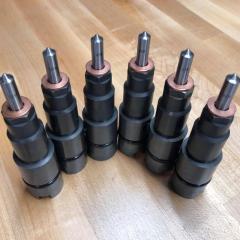- Replies 9
- Views 3.6k
- Created
- Last Reply
Top Posters In This Topic
-
trreed 3 posts
-
Red Rambler 2 posts
-
notlimah 1 post
-
015point9 1 post
Most Popular Posts
-
Yes, the pictures were fantastic. Most shops manually cut o-rings I believe. For the exhaust housing portion, the tighter the exhaust housing, the quicker the turbo spools, which means the torqu
-
Head gasket failure is not guaranteed above 40 psi like the article claims. I know plenty of compound trucks (mine included) that are not o-ringed that make 70-75 pounds of boost with no head gasket
-
So your setup is smaller turbos? and your timing is retarded back enough to be safe and run lower cylinder pressures? LOL, with articles such as this, you have to know they pull stuff out of thei






I thought this was a decent read and explanation of how to/why O Ring a head.
O Ring Cummins head